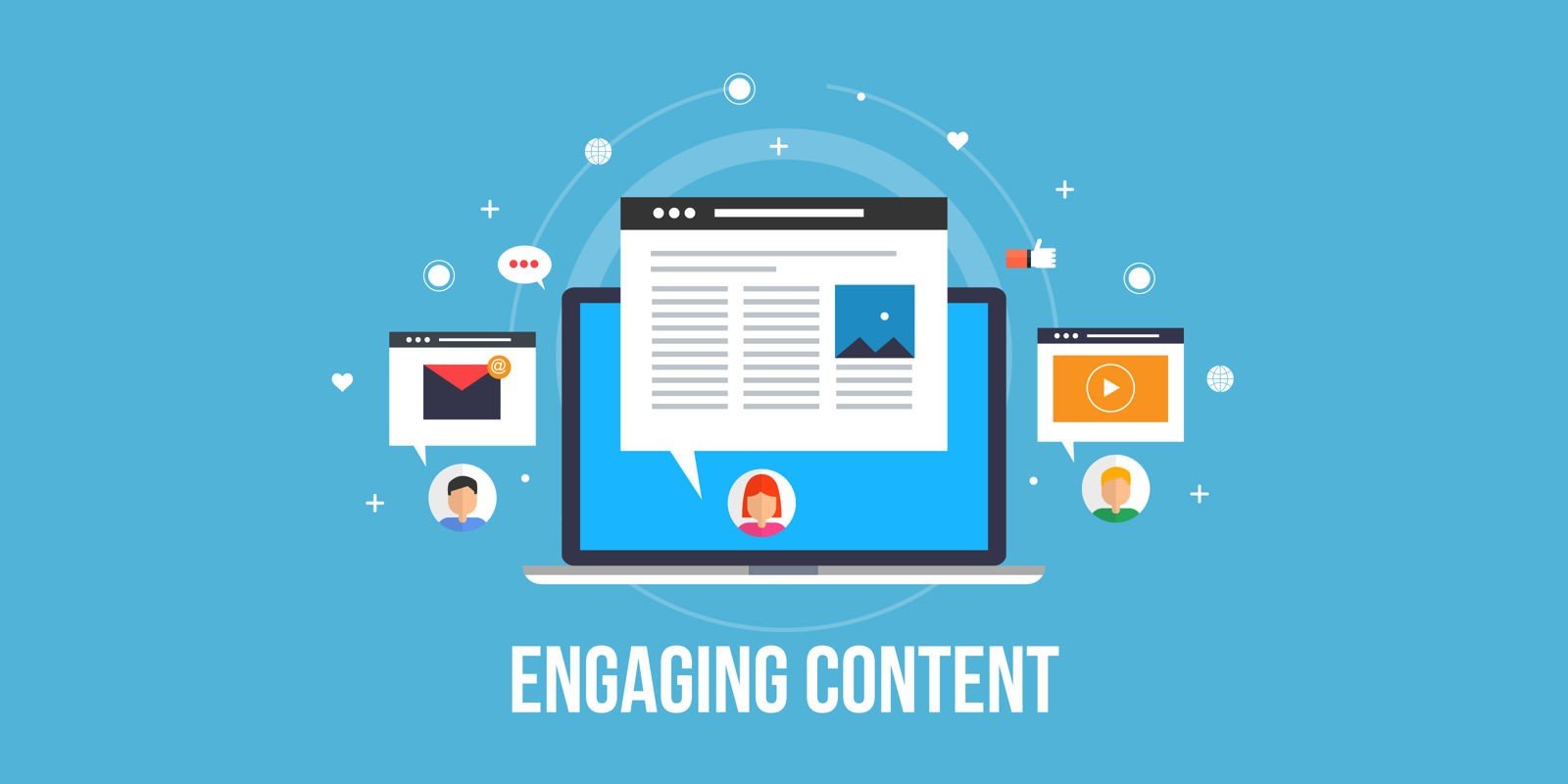In the ever-evolving world of eCommerce, staying ahead means more than just selling products online; it involves a strategic approach to marketing. As we move into 2024, eCommerce businesses must leverage diverse marketing strategies to stand out in a crowded digital marketplace. This guide dives into key strategies, offering insights on utilising each to enhance your e-commerce success effectively.
E-commerce Marketing Strategies & Tactics
Leveraging SEO for Enhanced Visibility
Search Engine Optimization (SEO) is vital to any successful e-commerce strategy. It’s a multifaceted approach to increase your site’s visibility and attractiveness to search engines and users. SEO isn’t just about inserting keywords into your content; it involves various techniques and best practices that boost your site’s rankings.
- Keyword Research and Optimization: It all starts with identifying the right keywords. Use tools like Ahrefs to conduct thorough keyword research. Look for terms your target audience uses when searching for products or services like yours. Once identified, these keywords should be strategically incorporated into product titles, descriptions, blog posts, and meta tags without overstuffing. Remember, the goal is to appear natural and relevant to search engines and users.
- Optimizing Meta Tags and Descriptions: Meta tags and descriptions are critical in SEO. They provide search engines with concise information about the content of your pages. Your meta descriptions should be compelling and include targeted keywords, as they often appear in search engine results and can influence click-through rates.
- Enhancing Site Structure and User Experience: A well-organized website structure helps search engines crawl your site more effectively and improves user experience. Simple navigation, clear categorization of products, and a well-structured sitemap can significantly enhance your site’s usability. Moreover, implementing breadcrumb navigation helps users understand their location within your site and aids search engines in understanding the structure of your site.
- Creating Quality Content: High-quality, relevant content is the cornerstone of effective SEO. Your content should address the questions and needs of your target audience. This can include detailed product descriptions, informative blog posts, how-to guides, and FAQs. Content that provides value and engages users is more likely to earn higher rankings in search results.
By implementing these SEO practices, you can enhance your eCommerce site’s visibility in search engine results, attract organic traffic, and drive sales. Remember, SEO is a continuous process that requires regular updates and adjustments to align with the evolving digital landscape and user behaviours.
Further Reading: Top Google Ranking Factors: Everything you need to know
Create a Content Marketing Plan
Content marketing extends beyond mere product descriptions and generic blog posts. The essence of effective content marketing is deeply understanding your audience’s interests, challenges, and desires. Tailoring content to these aspects involves crafting comprehensive how-to guides that offer practical solutions related to your products, sharing inspiring customer stories that humanize your brand, and providing insightful analyses of industry trends to establish thought leadership.
Diversify your content delivery using platforms like YouTube for engaging video content, including product tutorials, expert interviews, or behind-the-scenes glimpses of your operations. Podcasts are another avenue to explore, offering an opportunity to discuss topics in-depth and connect with listeners personally. The goal is to create diverse, value-added content that fosters community around your brand, encouraging interaction and loyalty.
Further reading: A Beginner’s Guide To Content Marketing
Social Media Marketing: Building Your E-commerce Brand’s Awareness
Social media marketing offers a unique opportunity to build a direct and emotional connection with your audience. It’s a platform for showcasing your products and sharing your brand’s narrative. Engaging with your audience on social media should go beyond posting product images; it involves storytelling that reflects your brand’s values and mission. Instagram Stories, for instance, are excellent for offering behind-the-scenes content that adds a human touch to your brand. In contrast, user-generated content, such as customer reviews or photos, enhances credibility and trust.
To foster engagement, utilize the interactive features of platforms like Facebook and Instagram, such as polls and live videos. These platforms also provide integrated shopping features, streamlining the journey from product discovery to purchase. Regularly interacting with your audience through comments and messages can build a loyal community and provide valuable feedback.
Further Reading: Creating an efficient social media marketing strategy
Email Marketing: Personalized Engagement
In eCommerce, email marketing is a powerful tool for personalized engagement. It’s about reaching the right customer with the right message at the right time. Segment your email list based on customer behaviour, purchase history, and preferences. This segmentation allows for more personalized communication, such as sending tailored product recommendations, reminders about items left in shopping carts, and exclusive offers that resonate with individual customer needs.
Automation tools like Mailchimp or Klaviyo can significantly enhance the efficiency of your email marketing efforts. These tools enable the creation of automated email sequences for various customer actions, like welcome emails for new subscribers or follow-up emails post-purchase, ensuring consistent and timely communication.
Further Reading: Four Fundamentals of an Effective Email Automation Campaign
Pay-Per-Click (PPC) Advertising For eCommerce
Pay-per-click advertising is an effective way to drive immediate traffic to your eCommerce site. It allows you to target specific keywords related to your products and services, placing your ads in front of users who are actively searching for what you offer. Utilizing Google Ads, you can create campaigns that target high-intent keywords, while platforms like Facebook and Instagram allow for highly visual and engaging ad formats.
A key aspect of PPC is A/B testing, which involves experimenting with different ad formats, copy, and targeting options to determine what resonates best with your audience. This continuous testing and optimization process ensures that your PPC campaigns are as effective and efficient as possible.
Influencer Marketing: Expanding Your Reach
Influencer marketing in eCommerce involves partnering with individuals who influence potential buyers and can drive brand awareness and sales. The key is collaborating with influencers whose followers align with your target audience. The effectiveness of influencer marketing lies not in the number of followers but in the engagement and trust they command. Though they may have smaller followings, Nano and micro-influencers often boast higher engagement rates and can be more cost-effective.
Develop authentic partnerships where influencers genuinely resonate with your brand. The content created should feel natural and true to the influencer’s style while showcasing your products effectively. This authenticity is crucial in making influencer marketing successful.
Implement Re-targeting Into Your eCommerce Marketing Campaign
Re-targeting is a crucial strategy in recovering potential lost sales. These techniques involve targeting users who have previously visited your website but left without making a purchase. By using re-targeting tools like Google Ads and Facebook Pixel, you can track these visitors and display targeted ads to them on various digital platforms.
This strategy keeps your brand and products at the forefront of potential customers’ minds, encouraging them to revisit your website and complete their purchases. Effective re-targeting campaigns require compelling ad creatives and strategic messaging that remind and incentivize users to return.
Mobile Optimization: A Non-Negotiable Strategy
Mobile optimization is essential in today’s eCommerce landscape. With significant online shopping occurring on mobile devices, your website must provide a seamless mobile experience. This involves responsive web design that adapts to different screen sizes, optimizing images and content for quick loading, and ensuring easy navigation and checkout processes on mobile devices.
The mobile shopping experience should be as intuitive and straightforward as the desktop version, if not more so. This includes having a simple, secure checkout process and mobile-friendly payment options. Prioritizing mobile optimization can significantly reduce cart abandonment rates and enhance overall customer satisfaction.
Loyalty Programs: Encouraging Repeat Business
Loyalty programs are a strategic way to encourage repeat business and build long-term customer relationships. Design a program that rewards customers for repeat purchases, referrals, or engagement with your brand. This could involve a points system, where points earned can be redeemed for discounts or special rewards, or a tiered program that offers exclusive benefits to frequent shoppers.
The key to a successful loyalty program is making it easy and appealing for customers to participate. This includes clear communication about the program’s work, the benefits available, and regular updates to keep customers engaged and informed.
Use Conversion Rate Optimization (CRO) To Boost Your Strategy
Conversion Rate Optimization (CRO) is the process of enhancing your website to increase the percentage of visitors who complete a desired action, such as making a purchase. This involves analyzing various elements of your website, such as product pages, landing pages, and the checkout process, and testing changes to improve performance.
Regular A/B testing allows you to compare different page versions to see which performs better. Tools like Hotjar provide visual insights into user behaviour, such as heatmaps and user recordings, helping you understand how visitors interact with your site and where they may encounter issues. The goal of CRO is to identify and remove barriers to conversion, making it as easy as possible for visitors to purchase and enhance their overall shopping experience.
Further reading:
- How to Optimize Your Website Both for SEO and Conversions
- CTA Best Practices For Better Conversion Rates
Final Thoughts
Adapting and evolving your marketing strategies is key to staying relevant and competitive. You can increase visibility and sales by effectively employing SEO, content marketing, social media, email marketing, PPC, and other strategies and build a robust brand presence online. Keep measuring, learning, and adapting to ensure your eCommerce business survives and thrives in the digital marketplace.
Interested in elevating your e-commerce business with cutting-edge digital marketing services? Contact us today to explore tailored strategies that can transform your online presence and drive your business forward.
Further Reading:



















